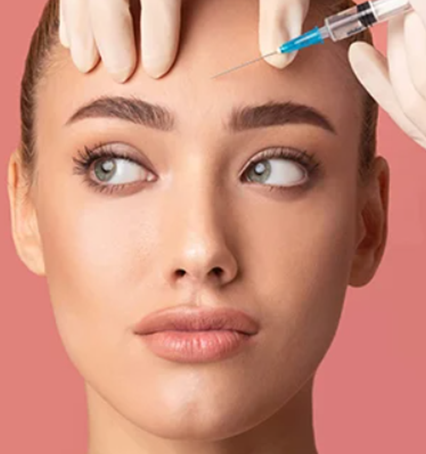What are Sunken Cheeks & What Causes Them?
Sunken Cheeks: Causes and Understanding the Hollow Appearance
Sunken cheeks refer to a condition in which the cheeks appear hollow or have a concave appearance. This can create an aged or gaunt appearance in the face. Sunken cheeks can be caused by various factors, including:
1. Aging: As we age, the production of collagen and fat in the face decreases, leading to a loss of volume and elasticity. This can result in sunken cheeks and a more hollow facial appearance.
2. Genetics: Some individuals may have naturally less prominent cheekbones or a lack of fat distribution in the cheeks, which can contribute to a sunken appearance.
3. Weight loss: Rapid or significant weight loss can lead to a loss of fat in the face, causing the cheeks to appear sunken.
4. Poor nutrition: A diet lacking in essential nutrients, especially protein and healthy fats, can affect the overall health and plumpness of the skin and underlying tissues, leading to sunken cheeks.
5. Smoking: Smoking is known to accelerate the aging process and can cause the breakdown of collagen and elastin in the skin. Over time, this can contribute to sunken cheeks.
6. Medical conditions: Certain medical conditions, such as autoimmune disorders, hormonal imbalances, or chronic illnesses, can affect facial fat distribution and result in sunken cheeks.
7. Facial trauma or surgery: Injuries to the face or previous facial surgeries can sometimes lead to changes in facial structure and cause the cheeks to appear sunken.
Treatment options for sunken cheeks vary depending on the underlying cause and individual preferences. These may include dermal fillers, fat grafting, facial implants, or surgical procedures like facelifts or cheek augmentation.
Our mission is to create a world where every investment in modern beauty is Worth It.
Let's keep in touch
Get updates of the treatments you are interested
What Surgical Options are There for Sunken Cheeks?
If you are referring to correcting or enhancing sunken cheeks, there are several surgical options available. These procedures aim to restore volume and improve the appearance of the cheeks. It's important to note that the specific surgical approach may vary depending on individual circumstances and the recommendations of a qualified plastic surgeon. Here are a few commonly performed surgical options:
1. Fat Grafting: This procedure involves harvesting fat from another part of your body (such as the abdomen or thighs) through liposuction. The fat is then processed and injected into the cheeks to add volume and improve contour.
2. Cheek Implants: Cheek implants are solid materials made of silicone or other biocompatible substances. They are surgically placed over the cheekbones to enhance volume and projection. The implants are typically inserted through incisions made either inside the mouth or in the lower eyelid.
3. Midface Lift: A midface lift is a surgical procedure specifically designed to lift and rejuvenate the middle area of the face, including the cheeks. It involves repositioning and tightening the underlying tissues to restore volume and improve cheek contour. This procedure is often performed in combination with a facelift for overall facial rejuvenation.
Face Lift (Rhytidectomy) for Sunken Cheeks
A face lift, or rhytidectomy, is a surgical procedure that aims to improve the visible signs of aging in the face and neck. While a face lift primarily focuses on addressing sagging skin and wrinkles, it may also have some impact on sunken cheeks, depending on the individual's specific concerns and the surgical techniques used.
However, it's important to note that a face lift alone may not be the most effective solution for sunken cheeks. Sunken cheeks can result from a loss of volume in the midface area, primarily due to age-related changes, weight loss, or genetics. To address sunken cheeks more specifically, additional procedures or treatments may be recommended.

Dermal Fillers for Sunken Cheeks
Dermal fillers can indeed be used to address sunken cheeks and restore volume to the area. Sunken cheeks are often a result of age-related loss of facial fat and collagen, but they can also be caused by genetics or weight loss. Dermal fillers are injectable substances that are used to add volume and shape to different areas of the face. The most commonly used fillers for sunken cheeks are made of hyaluronic acid (HA), a natural substance found in the body that helps to hydrate and plump the skin.
During the procedure, a healthcare professional will inject the dermal filler into the targeted areas of the cheeks. The filler will help to fill in hollow areas and stimulate collagen production, resulting in a more youthful and lifted appearance. It's important to note that the results of dermal fillers for sunken cheeks are not permanent. The duration of the results can vary depending on factors such as the type of filler used and individual metabolism. Typically, the effects last from several months to a year or more.

What Non-Surgical Options are There for Sunken Cheeks?
There are several non-surgical options available for addressing sunken cheeks. These options aim to restore volume and improve the appearance of the cheeks. Here are some common non-surgical treatments:
1. Dermal Fillers: Injectable dermal fillers can be used to add volume to the cheeks. These fillers typically contain hyaluronic acid, a substance naturally found in the body. The procedure involves injecting the filler into specific areas of the cheeks to restore fullness and improve contour.
2. Sculptra: Sculptra is an injectable treatment that stimulates collagen production in the skin. It involves multiple treatment sessions over a period of a few months. As collagen is gradually produced, the cheeks regain volume and a more youthful appearance.
3. Fat Transfer: Also known as fat grafting, this procedure involves harvesting fat from one part of the body, typically through liposuction, and injecting it into the cheeks. It provides a natural and long-lasting solution for sunken cheeks, as the transferred fat integrates with the surrounding tissues.
4. Thread Lift: A thread lift is a minimally invasive procedure that uses dissolvable sutures to lift and reposition sagging skin. In the case of sunken cheeks, specialized threads can be used to provide a subtle lift and improve the appearance of the cheeks.
5. Radiofrequency (RF) Treatment: RF treatments use radiofrequency energy to stimulate collagen production and tighten the skin. This can help improve the appearance of sunken cheeks by tightening the underlying tissues and promoting skin rejuvenation.
Our mission is to create a world where every investment in modern beauty is Worth It.
Let's keep in touch
Get updates of the treatments you are interested
What at-Home Options are There for Sunken Cheeks?
Sunken cheeks can occur due to various factors, including aging, weight loss, or certain medical conditions. While it's essential to consult with a healthcare professional or a dermatologist for an accurate diagnosis and personalized advice, I can provide you with some general at-home options that may help improve the appearance of sunken cheeks. However, please keep in mind that these options may not provide dramatic results and are not a substitute for professional medical advice.
1. Facial exercises: Certain facial exercises may help tone the muscles in your cheeks and improve their appearance. For example, you can try pouting your lips and pushing your fingers against your cheeks, or smiling with your lips closed and using your fingers to apply gentle resistance.
2. Facial massage: Massaging your cheeks can help stimulate blood flow and promote muscle tone. Use your fingertips to gently massage your cheeks in upward circular motions for a few minutes daily.
3. Facial yoga: Similar to facial exercises, facial yoga involves specific movements and poses targeting different facial muscles. Some facial yoga exercises focus on cheeks and may help improve their appearance over time. Look for facial yoga routines or videos that demonstrate these exercises.
4. Proper skincare: Taking care of your skin can contribute to a healthier appearance. Use moisturizers and serums that contain ingredients like hyaluronic acid or peptides, which may help plump the skin. Avoid excessive sun exposure and protect your skin by applying sunscreen daily.
5. Makeup techniques: Utilizing makeup techniques can help create the illusion of fuller cheeks. Contouring and highlighting can add depth and dimension to your face. Consult makeup tutorials or seek advice from makeup professionals for techniques specific to your needs.
Sunken Cheeks: Causes and Understanding the Hollow Appearance
Sunken cheeks refer to a condition in which the cheeks appear hollow or have a concave appearance. This can create an aged or gaunt appearance in the face. Sunken cheeks can be caused by various factors, including:
1. Aging: As we age, the production of collagen and fat in the face decreases, leading to a loss of volume and elasticity. This can result in sunken cheeks and a more hollow facial appearance.
2. Genetics: Some individuals may have naturally less prominent cheekbones or a lack of fat distribution in the cheeks, which can contribute to a sunken appearance.
3. Weight loss: Rapid or significant weight loss can lead to a loss of fat in the face, causing the cheeks to appear sunken.
4. Poor nutrition: A diet lacking in essential nutrients, especially protein and healthy fats, can affect the overall health and plumpness of the skin and underlying tissues, leading to sunken cheeks.
5. Smoking: Smoking is known to accelerate the aging process and can cause the breakdown of collagen and elastin in the skin. Over time, this can contribute to sunken cheeks.
6. Medical conditions: Certain medical conditions, such as autoimmune disorders, hormonal imbalances, or chronic illnesses, can affect facial fat distribution and result in sunken cheeks.
7. Facial trauma or surgery: Injuries to the face or previous facial surgeries can sometimes lead to changes in facial structure and cause the cheeks to appear sunken.
Treatment options for sunken cheeks vary depending on the underlying cause and individual preferences. These may include dermal fillers, fat grafting, facial implants, or surgical procedures like facelifts or cheek augmentation.
Our mission is to create a world where every investment in modern beauty is Worth It.
Let's keep in touch
Get updates of the treatments you are interested
What Surgical Options are There for Sunken Cheeks?
If you are referring to correcting or enhancing sunken cheeks, there are several surgical options available. These procedures aim to restore volume and improve the appearance of the cheeks. It's important to note that the specific surgical approach may vary depending on individual circumstances and the recommendations of a qualified plastic surgeon. Here are a few commonly performed surgical options:
1. Fat Grafting: This procedure involves harvesting fat from another part of your body (such as the abdomen or thighs) through liposuction. The fat is then processed and injected into the cheeks to add volume and improve contour.
2. Cheek Implants: Cheek implants are solid materials made of silicone or other biocompatible substances. They are surgically placed over the cheekbones to enhance volume and projection. The implants are typically inserted through incisions made either inside the mouth or in the lower eyelid.
3. Midface Lift: A midface lift is a surgical procedure specifically designed to lift and rejuvenate the middle area of the face, including the cheeks. It involves repositioning and tightening the underlying tissues to restore volume and improve cheek contour. This procedure is often performed in combination with a facelift for overall facial rejuvenation.
Face Lift (Rhytidectomy) for Sunken Cheeks
A face lift, or rhytidectomy, is a surgical procedure that aims to improve the visible signs of aging in the face and neck. While a face lift primarily focuses on addressing sagging skin and wrinkles, it may also have some impact on sunken cheeks, depending on the individual's specific concerns and the surgical techniques used.
However, it's important to note that a face lift alone may not be the most effective solution for sunken cheeks. Sunken cheeks can result from a loss of volume in the midface area, primarily due to age-related changes, weight loss, or genetics. To address sunken cheeks more specifically, additional procedures or treatments may be recommended.

Dermal Fillers for Sunken Cheeks
Dermal fillers can indeed be used to address sunken cheeks and restore volume to the area. Sunken cheeks are often a result of age-related loss of facial fat and collagen, but they can also be caused by genetics or weight loss. Dermal fillers are injectable substances that are used to add volume and shape to different areas of the face. The most commonly used fillers for sunken cheeks are made of hyaluronic acid (HA), a natural substance found in the body that helps to hydrate and plump the skin.
During the procedure, a healthcare professional will inject the dermal filler into the targeted areas of the cheeks. The filler will help to fill in hollow areas and stimulate collagen production, resulting in a more youthful and lifted appearance. It's important to note that the results of dermal fillers for sunken cheeks are not permanent. The duration of the results can vary depending on factors such as the type of filler used and individual metabolism. Typically, the effects last from several months to a year or more.

What Non-Surgical Options are There for Sunken Cheeks?
There are several non-surgical options available for addressing sunken cheeks. These options aim to restore volume and improve the appearance of the cheeks. Here are some common non-surgical treatments:
1. Dermal Fillers: Injectable dermal fillers can be used to add volume to the cheeks. These fillers typically contain hyaluronic acid, a substance naturally found in the body. The procedure involves injecting the filler into specific areas of the cheeks to restore fullness and improve contour.
2. Sculptra: Sculptra is an injectable treatment that stimulates collagen production in the skin. It involves multiple treatment sessions over a period of a few months. As collagen is gradually produced, the cheeks regain volume and a more youthful appearance.
3. Fat Transfer: Also known as fat grafting, this procedure involves harvesting fat from one part of the body, typically through liposuction, and injecting it into the cheeks. It provides a natural and long-lasting solution for sunken cheeks, as the transferred fat integrates with the surrounding tissues.
4. Thread Lift: A thread lift is a minimally invasive procedure that uses dissolvable sutures to lift and reposition sagging skin. In the case of sunken cheeks, specialized threads can be used to provide a subtle lift and improve the appearance of the cheeks.
5. Radiofrequency (RF) Treatment: RF treatments use radiofrequency energy to stimulate collagen production and tighten the skin. This can help improve the appearance of sunken cheeks by tightening the underlying tissues and promoting skin rejuvenation.
Our mission is to create a world where every investment in modern beauty is Worth It.
Let's keep in touch
Get updates of the treatments you are interested
What at-Home Options are There for Sunken Cheeks?
Sunken cheeks can occur due to various factors, including aging, weight loss, or certain medical conditions. While it's essential to consult with a healthcare professional or a dermatologist for an accurate diagnosis and personalized advice, I can provide you with some general at-home options that may help improve the appearance of sunken cheeks. However, please keep in mind that these options may not provide dramatic results and are not a substitute for professional medical advice.
1. Facial exercises: Certain facial exercises may help tone the muscles in your cheeks and improve their appearance. For example, you can try pouting your lips and pushing your fingers against your cheeks, or smiling with your lips closed and using your fingers to apply gentle resistance.
2. Facial massage: Massaging your cheeks can help stimulate blood flow and promote muscle tone. Use your fingertips to gently massage your cheeks in upward circular motions for a few minutes daily.
3. Facial yoga: Similar to facial exercises, facial yoga involves specific movements and poses targeting different facial muscles. Some facial yoga exercises focus on cheeks and may help improve their appearance over time. Look for facial yoga routines or videos that demonstrate these exercises.
4. Proper skincare: Taking care of your skin can contribute to a healthier appearance. Use moisturizers and serums that contain ingredients like hyaluronic acid or peptides, which may help plump the skin. Avoid excessive sun exposure and protect your skin by applying sunscreen daily.
5. Makeup techniques: Utilizing makeup techniques can help create the illusion of fuller cheeks. Contouring and highlighting can add depth and dimension to your face. Consult makeup tutorials or seek advice from makeup professionals for techniques specific to your needs.









